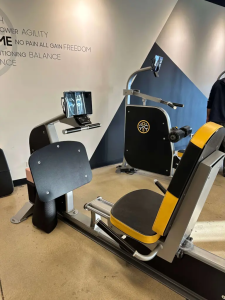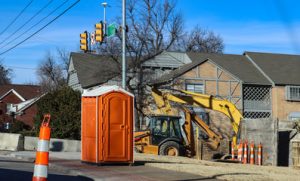Provo Plumber is crucial to the smooth functioning of modern society. From fixing leaky faucets to unclogging drains, they are responsible for installing and maintaining the piping and sewage systems that keep our homes and workplaces running smoothly.

Plumbers need to have a mix of hard and soft skills to succeed in this career. Some of the key soft skills include communication and problem-solving.
Plumbing systems take away waste, deliver clean water, and regulate indoor climate through pipes, valves, fixtures, and appliances. Plumbers install these systems in new construction and in homes and businesses. They may also modify existing ones to improve their performance and safety. Their job involves laying pipes, connecting fixtures and appliances, and testing the system for leaks and proper functionality. Plumbers typically work with other professionals, such as electricians and builders, to ensure that all aspects of a project are completed correctly.
Before starting an installation, a plumber must prepare the work area by removing any obstacles that could get in the way of their work. They must also check with local authorities to verify that their work complies with all relevant regulations. Then, they must mark the intended route of the pipes and create a diagram of the layout. This will help them avoid any issues with the building’s structure or foundation in the future. After preparing the work area, they can start installing the pipes. They may need to cut and bend the pipes, which requires specialized tools. They also need to make sure that the joints are properly sealed to prevent water leaks. Plumbers can install various kinds of fixtures, including bathtubs, toilets, sinks, faucets, and showers. They can also install and connect appliances like dishwashers and washing machines.
Some plumbers specialize in certain types of installations. For example, those who focus on kitchen and bathroom remodeling projects have the skills to replace or upgrade these fixtures to enhance the appearance and functionality of a space. They are also knowledgeable about the latest plumbing technologies, such as eco-friendly options for water usage that can reduce a home’s energy costs.
Plumbing is a physically demanding profession, and it’s important for plumbers to stay up-to-date on the latest industry practices. This helps them provide better services to their clients and maintain a high level of professionalism. In addition, plumbers often need to complete ongoing training to keep up with evolving technologies and codes. They must also be comfortable working on ladders and in tight spaces.
Maintenance
Plumbing systems are critical to the safety and well-being of people in homes, businesses, hospitals, and factories. Plumbers ensure that these systems are working properly by maintaining and repairing them as needed. They also install new systems to meet the needs of a building or business.
The job requires a high level of skill and knowledge, so plumbers must complete extensive training to learn the necessary skills. This includes classroom learning and hands-on experience with tools and equipment. They also need to understand how different types of pipes fit together and what affects their function. Plumbers must also be able to read and interpret blueprints and other technical documents to plan and execute installation projects.
When a problem arises, they must diagnose and repair the issue quickly and efficiently. This often involves locating the source of the problem and finding a suitable replacement part. It may require removing existing fixtures and cutting holes in walls or floors to access the pipe network. Plumbers must be able to use various tools and techniques to perform repairs, including soldering, brazing, threading, cutting, and hammering. They also need to be able to read and follow written and verbal instructions from supervisors, engineers, and other team members.
Many plumbers work directly with clients, so they must have excellent customer service skills. This includes being able to explain complicated issues in clear and simple terms, listening to client concerns, and providing accurate estimates for work. They should also be punctual and respectful of their clients’ property.
Plumbers frequently inspect plumbing systems to identify problems and potential hazards. This can involve using specialized equipment like video cameras and pressure gauges to assess the condition of pipes and other components. They also need to understand how different plumbing fixtures work together and how they can be adjusted to improve performance or reduce maintenance costs.
Plumbers must also be able to maintain a record of all their inspections, repairs, and installations. This is important for meeting regulatory requirements and ensuring that all work is completed to the highest standards. A CMMS tool can help plumbers streamline this process by storing all inspection reports, documents, and other information in one place. It can also help them track the history of each plumbing asset and predict future maintenance needs.
Troubleshooting
Plumbing systems are complex, and a plumber is often needed to troubleshoot when something goes wrong. Problems can range from minor clogs to burst pipes, and each situation calls for different steps to be taken. This is why it’s important for plumbers to have troubleshooting procedures in place. They should be able to assess the situation and determine which tools, parts, and techniques are best suited to the job.
Some of the most common issues that homeowners run into include a clogged drain, a running toilet, and leaky faucets. These problems may seem minor, but if left untreated, they can cause significant damage and increase utility bills. Luckily, most of these problems can be resolved by following simple troubleshooting tips.
If a pipe has a leak, the first step is to stop further water damage by turning off the main water supply. This will prevent any more water from entering the home, and it can give you time to call a plumber. For smaller leaks, wrapping the affected area with plumber’s tape or using a pipe clamp can provide a temporary solution until professional help arrives.
For clogged drains, try to clear the blockage with a plunger or drain snake before using chemical drain cleaners. These chemicals can be toxic and are often not effective. If the clog is located far down in the drain line, you might need to remove the drain cover and dig out the clog manually.
Industrial plumbers are called on to work in a variety of settings, from manufacturing plants to power stations. They deal with large-scale piping and equipment, as well as more complex issues like regulating indoor climates. They must be able to read blueprints and understand engineering principles in order to properly install, repair, and maintain these systems.
Commercial plumbing is a vital service that can make or break businesses. It’s important for businesses to regularly inspect their plumbing systems and ensure that they are functioning properly. This can prevent costly repairs and disruptions in workflow. In addition, promoting responsible water usage among employees can minimize potential issues.
Repair
While some plumbing problems have easy at-home solutions, like clogged drains or a water heater that needs replacing, most require the skill and expertise of a professional plumber. This is particularly true of issues with sewer lines, which must be properly cleaned, inspected and repaired to avoid sewage backups and other dangerous consequences.
During a pipe repair, the plumber will start by turning off the water supply to the affected area. This will prevent any accidental flooding of your home or property while the plumber is working. They will then open all faucets and flush all toilets to drain excess water and relieve pressure from the system. They will also check for and repair any leaks in the pipes, at joints or from fixtures.
Before beginning any repairs, the plumber will thoroughly inspect your entire plumbing system with a camera to identify the source of the problem and determine the best course of action. This is important, as many plumbing problems occur in places that are difficult to access, like behind walls or under floors. In these cases, the plumber may need to break through drywall or dig trenches to locate and repair the problem.
In addition to identifying problem areas, the plumber will test your water to ensure that it is safe for use. This will include running water through fixtures and checking for any discoloration or unusual tastes. They will also assess the quality of your water by testing its pH level.
Once the inspection is complete, the plumber will recommend any necessary repairs and provide a detailed estimate of costs before starting work. This will help you budget for the work and avoid any surprises when the bill comes.
When performing any repair, the plumber will use only the highest-quality parts and tools. This will help your plumbing last longer and reduce the risk of future problems. Be sure to ask the plumber about their part selection process and whether they use high-quality, name-brand parts. While it may be tempting to save money on parts, low-quality items will likely break more quickly and require replacement sooner, leading to more costly repairs in the long run.





